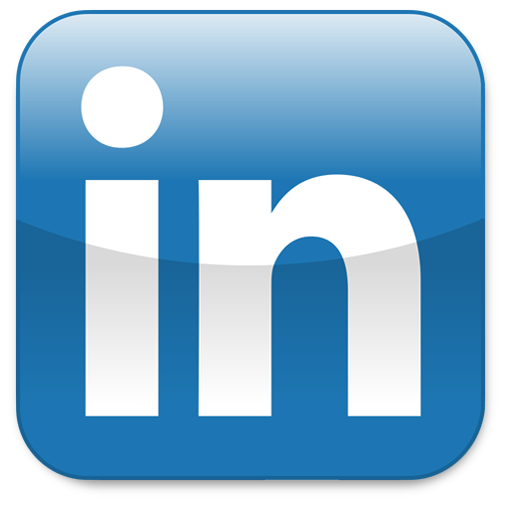Giving
Small foundations, big impacts

Photo by Jon Gilbert Fox
DiRenzo, who has identified a protein that may be an indicator for a deadly
form of breast cancer, recently received funding from the Pardee Foundation.
By Kate Villars
Mention private foundations, and those likely to come to mind for most people will be large, high-profile philanthropies like the Bill and Melinda Gates Foundation, the Ford Foundation, or the Robert Wood Johnson Foundation. Such organizations give hundreds of millions—even billions—of dollars to charitable causes each year.
But nationwide there are more than 75,000 private foundations, the vast majority of which are small grant-makers with few or no paid staff and whose giving ranges from less than $100,000 to a few million dollars annually.
Despite their small size, the support of such foundations is felt throughout Dartmouth Medical School and Dartmouth-Hitchcock—in education, research, patient care, and community outreach. Though their grants may be relatively small, their impact can be significant.
Effect is "huge"
A case in point is the J.T. Tai & Company Foundation. Established in 1983 by the late Jun Tsei Tai, the owner of a real estate management company and an internationally renowned dealer in Asian art, the foundation primarily supports medical education and health care. The Tai Foundation has been a loyal donor to DMS since 1996, providing a total of $595,000 in scholarship aid. "Scholarship gifts are an incredible investment," says G. Dino Koff, DMS's director of financial aid. "Every dollar in scholarship aid lowers a student's loans, and the long-term effect of that is huge, considering the interest that accrues on a loan over 10 or 15 years. Our students are truly grateful."
Kate Villars is assistant director of development communications for DMS-DHMC.
Many small foundations make a meaningful impact by focusing their philanthropy on a narrow area of interest. Such is the case with the Neil and Louise Tillotson Fund of the New Hampshire Charitable Foundation, which targets its giving in New Hampshire's northernmost county, Coos County, and surrounding communities. For the past two and a half years, the Tillotson Fund has supported the North Country Palliative Care Collaboration—a highly successful initiative that is improving palliative care for the region's aging population. Its grants to Dartmouth-Hitchcock, totaling $300,000, are enabling the Section of Palliative Medicine to work with care providers in Littleton, Lancaster, Berlin, and Colebrook, N.H., and St. Johnsbury, Vt., to strengthen and expand hospice and palliative-care services for rural residents with advanced illness and their families.
"Many smaller foundations recognize that they
can have a lot of impact by supporting pilot-type
studies," explains DMS researcher James DiRenzo.
In research, small foundations often fill a critically important niche. "Many smaller foundations recognize that they can have a lot of impact by supporting pilot-type studies, where you've got some preliminary results, but you need to generate a lot more data before you can apply for a bigger federal grant," explains James DiRenzo, Ph.D., an associate professor of pharmacology and toxicology at DMS and scientific director of the Comprehensive Breast Program at Dartmouth's Norris Cotton Cancer Center. In January, DiRenzo received a $163,000 grant from the Elsa U. Pardee Foundation. This foundation was created in 1944 upon the death of Mrs. Pardee, who provided $1 million through her will "for the promotion of the control and cure of cancer." Sixty-six years later, her initial bequest has provided an astonishing $88 million in grants.
"I think some of the best publications that have come out of our lab have . . . originated with private foundation money," says DiRenzo. "In my opinion, it's a great return on their investment."
Enduring connections

Photo by Mark Washburn
Donnenfeld, a leader in ophthalmology, chairs his class's reunion gift committee.
By Kate Villars
DMS alumnus Eric Donnenfeld knew from a young age that he wanted to be an ophthalmologist. His fascination with the eye began as a boy, when his father—a physician—helped him to dissect a pig's eye given to him by a neighboring farmer on Long Island. "I was seven years old, and I knew all the parts of the eye," he says.
Almost 50 years later, Donnenfeld is still excited about his chosen field. "There's nothing more rewarding than visually rehabilitating somebody and restoring their vision," he says. "It's one of the most satisfying things you can do with your life."
A pioneer in laser vision correction surgery, Donnenfeld credits DMS with launching him on his rewarding career. "As I look back at the seminal events of my life, I have to say that the training I received at DMS really made me the physician that I am today," says Donnenfeld, a Dartmouth College graduate and a member of the DMS Class of 1980. "My professors at DMS had a deep commitment to teaching and helping us become the best physicians we could be."
He went on to do specialty training in cornea and refractive surgery. As a principal investigator in the trials that led to FDA approval of laser vision correction surgery in the 1990s, he was among the first physicians anywhere to perform the procedure. He continues to practice at Ophthalmic Consultants of Long Island, where he is a founding partner, and is also a clinical professor of ophthalmology at New York University.
The relationships Donnenfeld forged at DMS have shaped his personal as well as his professional life. It was during a pediatric rotation at DHMC that he met and began dating an intern named Marleen Brajer. This year, they will celebrate 28 years of marriage.
"The camaraderie of DMS is something that I've
carried with me" for 25 years, says Donnenfeld.
"DMS is a place that fosters friendships and relationships," says Donnenfeld. "I had relationships with faculty that were extraordinarily close. Many of my best friends are my medical school classmates. The camaraderie of DMS is something that I've carried with me during the last 25 years."
Donnenfeld still maintains close ties to the Medical School, giving back to DMS in many ways. He has been a member of its Board of Overseers since 2004. He has also served as a class agent and this year is again chairing the Class of 1980 Reunion Gift Committee. A loyal and generous donor himself, Donnenfeld expects to lead his class to besting the record in reunion giving that it set five years ago. "This is a chance for us to make a statement that we really appreciate everything DMS has done for us," he says.
Much of his own giving has been unrestricted. "My view is that I'm going to put my trust in the people of DMS to use the funds I donate wisely," explains Donnenfeld, who is one of the top donors to the Fund for DMS. "Serving on the Board of Overseers, I'm privileged to see how the administration works, and I like what they're doing. DMS is a world-class medical school."
Click, click, give
As the Fund for DMS and
the Dartmouth-Hitchcock
Annual Fund race toward
the finish of their fiscal year
on June 30, more donors are
choosing to give online. The
number of online annual
fund gifts is up 30% over last
year, and dollars contributed
online are up more than
50%. To learn more, click
on www.DMSNet.org/Donate or
www.Dartmouth-Hitchcock.org/DHAF.
Dollars for scholars
Students graduating from
DMS this year are leaving
with an average of $109,000
in medical school debt—well below the national average
of $150,000 for graduates
of private medical
schools. To cover the annual
tuition and fees of $47,000,
84% of DMS M.D. students
must take
out loans.
And roughly
50% receive scholarship aid,
based on need—thanks
to donors who have made
gifts to scholarship endowments
or current-use funds.
If you'd like to offer feedback about this article, we'd welcome getting your comments at DartMed@Dartmouth.edu.
This article may not be reproduced or reposted without permission. To inquire about permission, contact DartMed@Dartmouth.edu.






